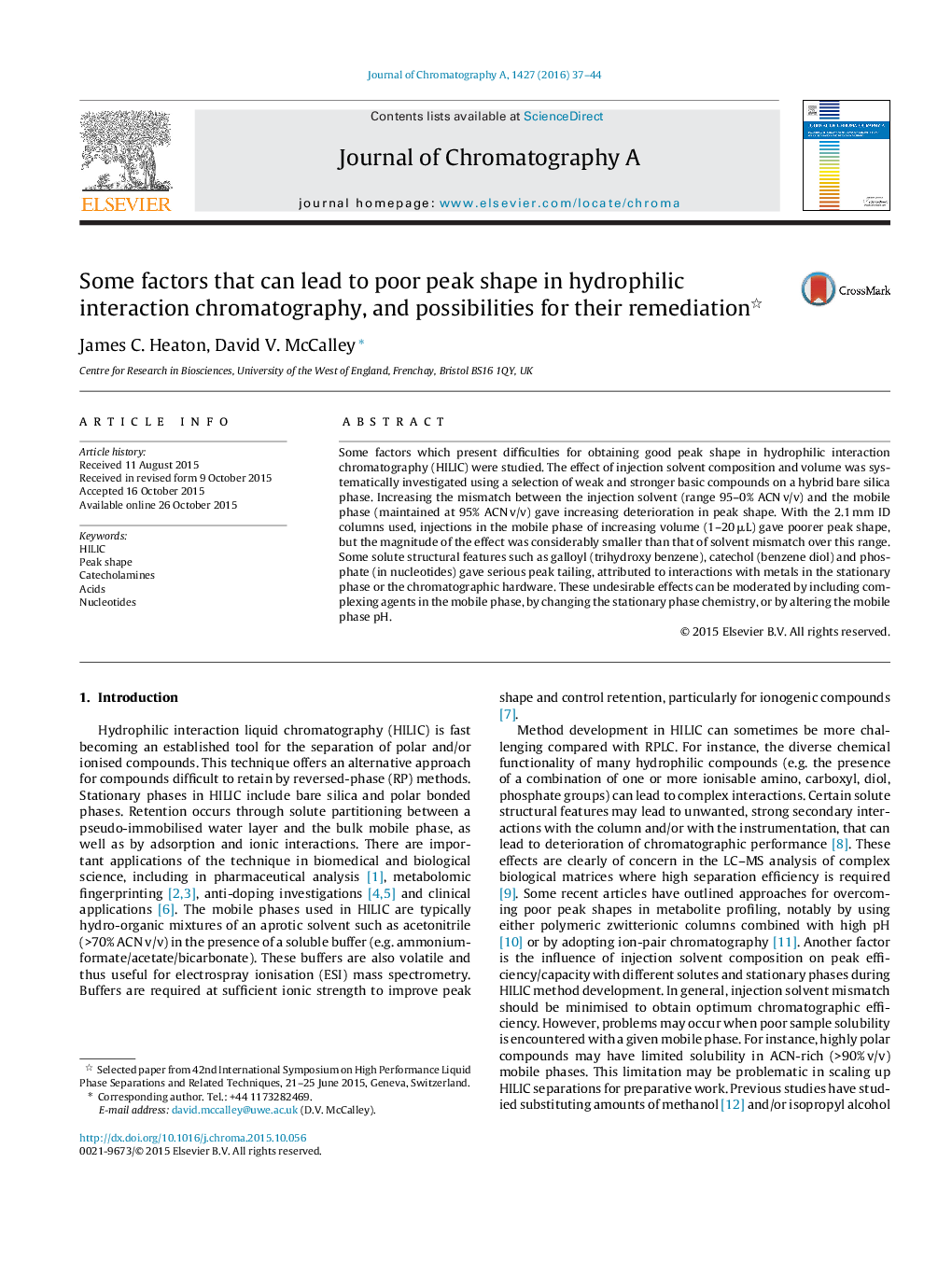| Article ID | Journal | Published Year | Pages | File Type |
|---|---|---|---|---|
| 1198596 | Journal of Chromatography A | 2016 | 8 Pages |
•Effect of injection solvent and volume on efficiency studied in HILIC.•Injection solvent/mobile phase mismatch gave substantial deterioration in efficiency.•Effect of solvent mismatch greatly exacerbated by increased injection volume.•Peak shapes of some solutes strongly influenced by solute–metal interactions.•Metal interactions minimised with complexing agents, higher pH mobile phase.
Some factors which present difficulties for obtaining good peak shape in hydrophilic interaction chromatography (HILIC) were studied. The effect of injection solvent composition and volume was systematically investigated using a selection of weak and stronger basic compounds on a hybrid bare silica phase. Increasing the mismatch between the injection solvent (range 95–0% ACN v/v) and the mobile phase (maintained at 95% ACN v/v) gave increasing deterioration in peak shape. With the 2.1 mm ID columns used, injections in the mobile phase of increasing volume (1–20 μL) gave poorer peak shape, but the magnitude of the effect was considerably smaller than that of solvent mismatch over this range. Some solute structural features such as galloyl (trihydroxy benzene), catechol (benzene diol) and phosphate (in nucleotides) gave serious peak tailing, attributed to interactions with metals in the stationary phase or the chromatographic hardware. These undesirable effects can be moderated by including complexing agents in the mobile phase, by changing the stationary phase chemistry, or by altering the mobile phase pH.
